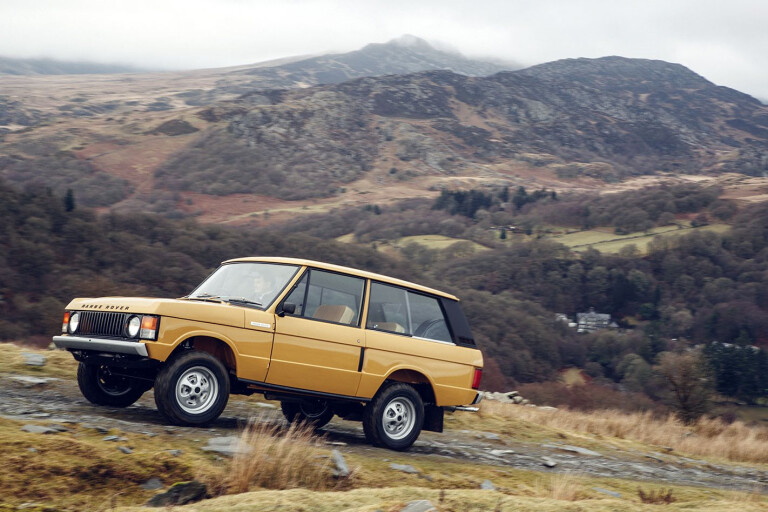
THE DARIEN Gap, it’s safe to say, is not up there on many people’s holiday-destination bucket list.
This vast, godforsaken tract of jungle, swamp and mountains located between Panama and Colombia is most noteworthy for being the only real interruption to the circa-30,000km pan-American highway network linking Alaska to the southernmost tip of South America.
It’s a stronghold of wilderness where the cloying air is thick with insects and vampire bats; the swampy ground riddled with deadly snakes; dense foliage concealing aggressive wild pigs.
You’ll search in vain for a Contiki resort in the Darien.
The full-length version of this feature appears in Wheels magazine - click here to subscribe to the print edition at a special price!
It was the perfect place, then, back in 1972, to show the world the capabilities of the then-new Range Rover, launched just two years earlier. The Darien Gap was by far the most arduous part of an epic pan-American journey taken by two lightly modified examples, beginning in Anchorage, Alaska, and finally concluding, just over six months later, in Ushuaia, on the Tierra del Fuego archipelago in Argentina.
But it was deep in the Darien that the expedition team, bolstered to 64 members for this leg, must have questioned the sanity of the undertaking. They hacked and chainsawed through the dense jungle, often calf-high in mud, using aluminium ladders to allow the vehicles to be winched up treacherous ravines, and crossing rivers by lashing the cars to two inflatable rafts.
For prolonged periods, progress was reduced to just a kilometre or two each day. There were diff failures (uprated units were heli-dropped in) and it took 100 days before the team finally emerged from the south side of the hellish Darien, every man gaunt and exhausted, many suffering malaria or trench foot from trudging through mud for 12 hours a day.

They had taken two vehicles through one of the most inhospitable places on earth before finally, on 9 June 1972, six months after setting out from Anchorage, the two Range Rovers reached the southernmost tip of South America.
The expedition set a record at the time for the first complete trans-Americas journey, but arguably more significantly, it helped shape the reputation of an SUV that would come to be lauded as the pioneer of the premium 4x4 segment.
Okay, that may be a slightly contentious issue, given the Jeep Wagoneer preceded the original Range Rover by around seven years, and undoubtedly influenced its conception.
But the fact is, the V8-powered 4x4 from Solihull would reign virtually unchallenged for nearly two decades as the most complete and aspirational off-road-capable vehicle on the market.
So surely now, as SUVs have charted their inexorable rise to dominate the global car industry, and premium high-riders have become the cash cows that sustain other, more marginal product lines for the upmarket heavyweight brands, it’s time to look back at the evolution of the founding father on its 50th birthday?
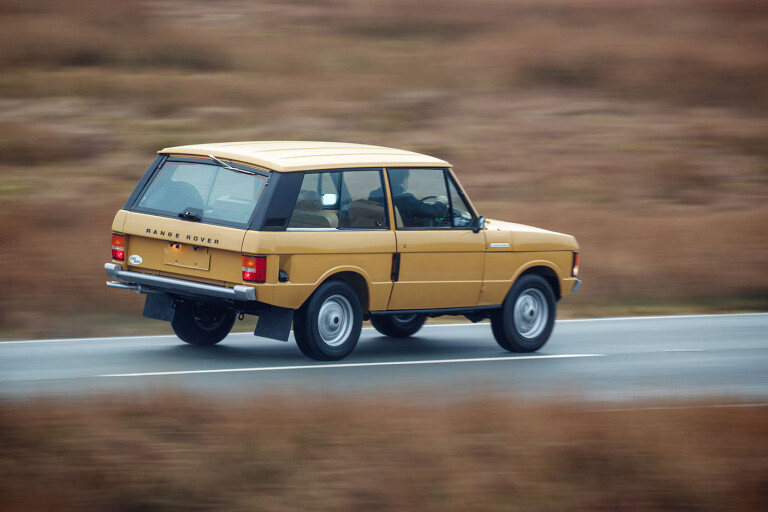
LIKE MOST landmark vehicles, the original Range Rover was very much the vision of one man. Charles Spencer (‘Spen’) King had been a two-decade engineering veteran within Rover when, in the late ’60s, in collaboration with fellow Rover engineer Gordon Bashford, he became convinced there was a market for a 4x4 with greater performance, refinement and comfort than the then-current Land Rover.
Of course it would still have to deliver on the utilitarian, working-vehicle brief that was central to the Land Rover ethos.
King, who died in a cycling accident in 2010 aged 85, would later downplay the perception that the original was an upmarket 4x4.
“It was actually a very basic vehicle in many ways, and definitely in the cabin, with vinyl seats and rubber mats,” he reflected. “We simply said that a Land Rover had less room and less ride comfort and that it didn’t drive that fast.
"We thought it was time to improve all that. In the process of working on it, the V8 engine came along. It all came together … and nobody stopped us from doing it.”
In 1967, King and Bashford began engineering a model known internally as the 100-inch Station Wagon, a 4x4 which was intended to be practical, hence the hose-out interior, and with a boot large enough to carry a bale of hay or a non-claustrophobic sheep.
King’s engineering genius for the Range Rover was to take the hefty chassis of the Land Rover and reconfigure it with long-travel, coil-spring suspension.
Naturally, the prototype chassis needed a body, so they went away and fashioned one, largely from aluminium, leaving the roof pillars black (to save on paint.) Even the vaunted bonnet castellations, now a feature considered essential to any new Range Rover, were included originally as convenient mountings for the wing mirrors, and to make the extremities of the vehicle more visible to the driver.
The engineering hack was then handed over to the head of styling, David Bache, who instantly felt that the car already looked much as it should.
Bache simply refined its proportions and edges, and finessed the details before declaring it job done. With its full-time all-wheel-drive system, Buick-sourced 3.5-litre all-alloy V8, and disc brakes on all four of those long-travel corners, the Range Rover was ready to take on the world.
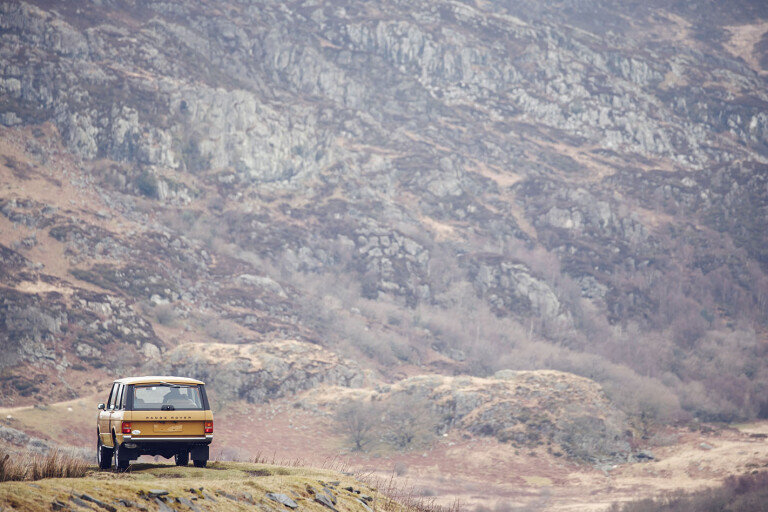
King, ever the engineer, tended to downplay his part in the styling, yet there’s no questioning the essential rightness of the first-gen Rangie’s exterior design. It was, after all, the first car ever to be displayed in Paris’s Louvre museum as a statement of intelligent, functional industrial design.
In the same year as the two blue cars completed that arduous pan-American crossing, the Range Rover had arrived in Australia, commanding a hefty $7475 at a time when Toyota 40- and 50-Series LandCruisers were priced between $2700 and $4800. Problem? Not so much, as it would transpire…
By the late 1970s, it was Aussie hands bolting together the Rangie, with Jaguar Rover Australia commencing local production at its Enfield plant in Sydney using knockdown kits supplied by the Solihull factory.
The two-door body was always a slightly contentious issue, though, especially in markets like the Middle East where owners employed drivers, and had to suffer the indignation of squeezing past the folded front seat to take up their positions in the back.
So the four-door model was introduced, making it to Australia in 1982, quickly becoming standard as the two-door was phased out.
By the time the ’90s rolled in – a full 20 years from its launch, remember – the original Rangie had matured into a glamorous dame long removed from the hose-out debutante.
The 3.5-litre V8 had been replaced by a new injected 3.9-litre V8 hooked to a ZF four-speed auto, and ABS featured on a 4x4 for the first time. Providing clear proof that Aussies were prepared to pony up to join the 4x4 elite, the Vogue SE climbed above $100K.
Incredibly, the original ‘Classic’ Range Rover continued in production until 1996, making for a remarkable 26-year run. Even more astonishingly, it continued to sell alongside the second-generation (P38) model for two years.
While the P38 bought enlarged developments of the original Buick-sourced overhead-valve V8, the new model retained the defining features of the original, namely separate-chassis construction, live axles at both ends, full-time all-wheel drive, and aluminium body panels.
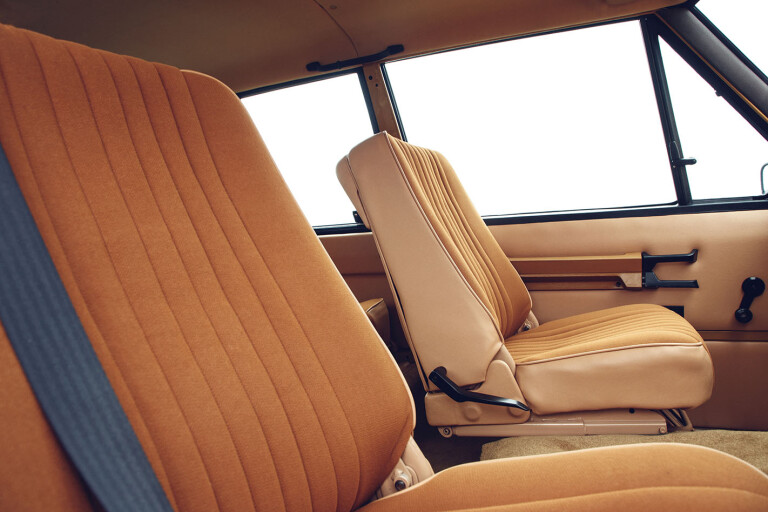
THE SALE of Land Rover to three different owners in 14 years would have a profound influence on how the three subsequent generations were developed.
First came BMW, which bought the brand in 1994 and gave the third generation (L322) monocoque construction and fully independent suspension. Ford engines would replaced the BMW units from 2005, following the Blue Oval’s acquisition of JLR, which it incorporated into the Premier Auto Group alongside Aston Martin and Volvo at the turn of the millennium.
Which brings us to the current fourth-gen (L405) from 2012, another clean-sheet design.
Bankrolled by India’s Tata Motors, which bought Land Rover from Ford in 2008, it saw an aluminium-intensive monocoque slash more than 400kg from the steel structure of its L322 predecessor, which brought predictably significant benefits to performance, fuel efficiency, on-road dynamics and off-road ability.
Ah yes, the non-negotiable off-road prowess. Gerry McGovern, Chief Creative Officer for Land Rover, understands this as well as anyone within JLR.
“Off-road capability is in our DNA,” he says. “It’s what differentiates you, because once technology, quality, sustainability – whatever it is – once those things become comparable from one manufacturer [to] another, what are you left with? You’re left with the DNA; the essence of your brand.”
Do any owners ever draw on those vast reserves of off-road ability? Of course not. But like owning a Rolex watch that can resist depths of 300 metres, just knowing that your sumptuous, leather-lined 4x4 could, theoretically, make it through the Darien Gap is what really counts.
And while this segment now sees ultra-premium rivals like the Bentley Bentayga, Rolls-Royce Cullinan, and Aston Martin DBX pushing the luxo high-rider template ever northward, it’s still possible to spend well over $400,000 on the current flagship long-wheelbase Range Rover, and claim off-road superiority to trump the lot of them.
But 2021 will mark the ninth year of production for the L405 model, meaning the all-new, fifth-gen Range Rover is nearly ready to debut.
It comes at a pivotal, turbulent time of contradictions: ever-tightening emissions regulations that hit hard at fundamentally large, heavy SUVs … yet the world’s high-net-worth consumers are getting ever-richer and demanding even more by way of luxury and that all-important perception of go-anywhere capability.

Charles ‘Spen’ King, 1925 – 2010: A visionary engineer who got his hands and boots dirty
Charles ‘Spen’ Spencer King began his career in 1942 as an apprentice at Rolls-Royce, quickly becoming expert with jet and gas turbine engines.
In 1945 he moved to Rover at Solihull, prompted by the fact that the British automaker had been involved in the early stages of jet-engine development and had ambitions for the gas turbine in automotive applications.
In ’52, King piloted the first Rover turbine car, JET1, at 243km/h, and gas turbines powered the Le Mans racing car of 1963-65.
But as it became clear that there was no immediate prospect of a cost-competitive production turbine car, King moved into mainstream Rover development.
He would go on to head up Rover and Triumph’s combined engineering department, and later produce concept vehicles with advanced aerodynamics and lightweight aluminium construction.
In 1990, Land Rover marketed a special Range Rover edition called the ‘CSK’ in his honour.
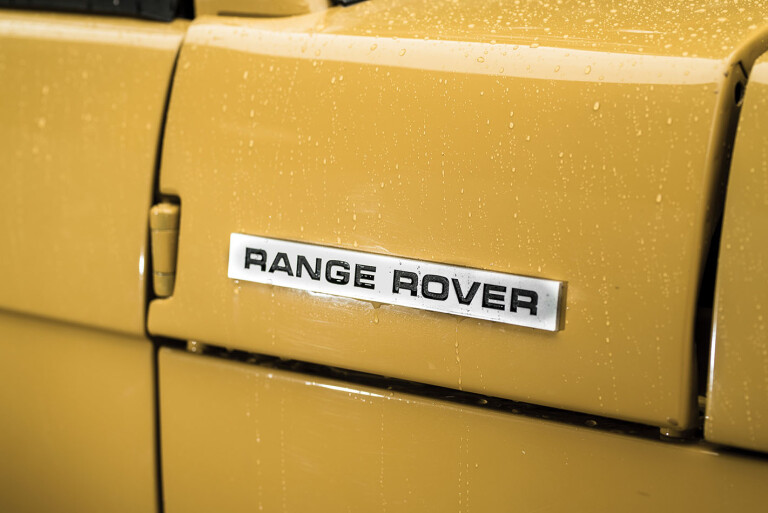
Evolution of an icon: Four generations, one overarching philosophy
1970: The Classic
Door-count aside, the original was a design so fundamentally right, it hardly needed work from the LR styling department. It would endure for an incredible 26 years.

1994: The continuation
Brought 4.0- and 4.6-litre iterations of the Buick-sourced V8, and later, BMW diesels. Was unloved for a period, but now desirable as prices for the Classic have surged.
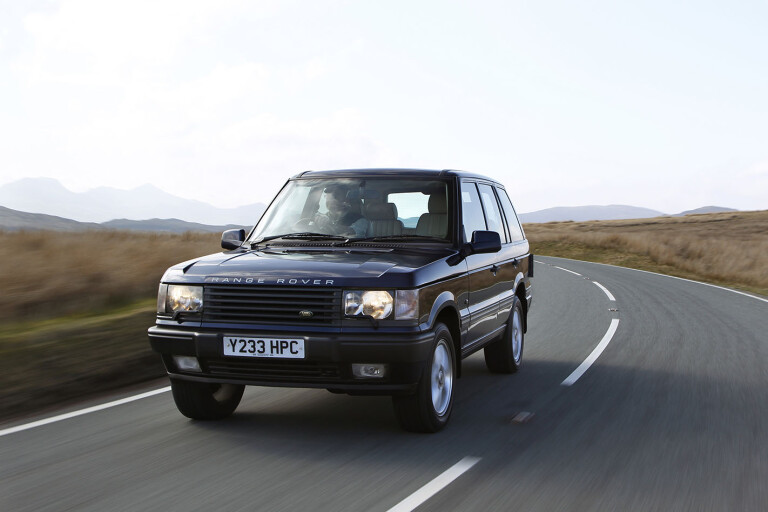
2001: The rethink
BMW ownership oversaw the third-gen’s move to monocoque construction and independent suspension; logical so it could component-share with the original BMW X5.
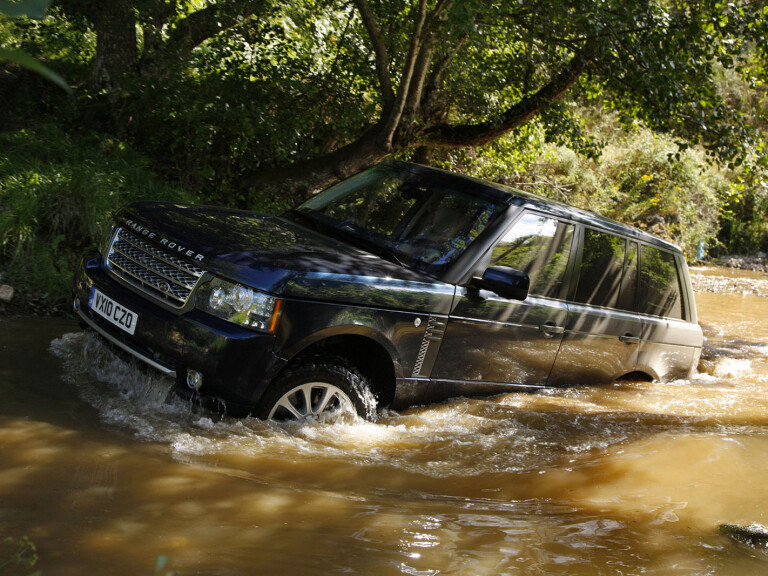
2012: The fat blaster
All the traditional design cues pulled together in a sleeker, smarter and lighter fourth-gen model thanks to the deep pockets of India’s Tata. Still brilliantly capable.
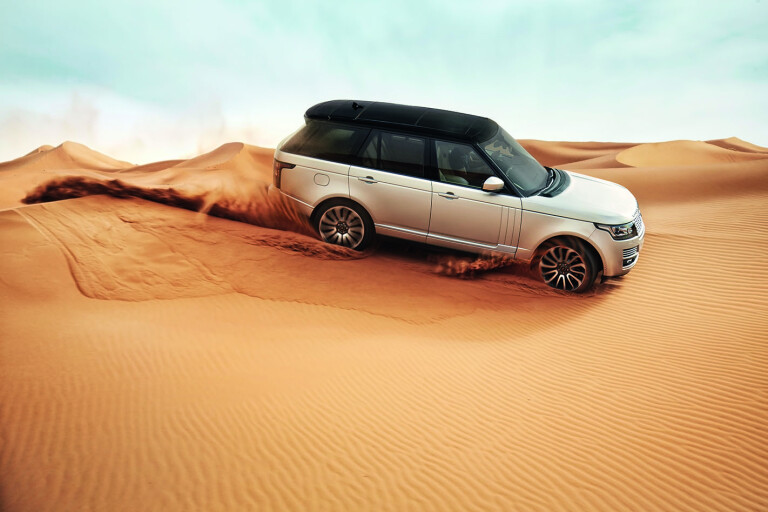
The great expeditions
It isn’t just Defenders that endlessly probe the globe’s least accessible nether regions – the flagship Range Rover is equally inclined to an epic adventure
1971-1972: Crossing the gap
As touched upon in the intro to this feature, the Darien Gap was thought impassable. But the Range Rover expedition from Alaska to Tierra del Fuego wasn’t actually the first to attempt the Darien – that crown was taken by the Trans-Darien Expedition of 1959-’60, utilising a Land Rover 88 wagon and a Jeep. Sponsored by the Pan-American Highway Congress, the objective was to chart a passage for the completion of the pan-American route. Never happened.
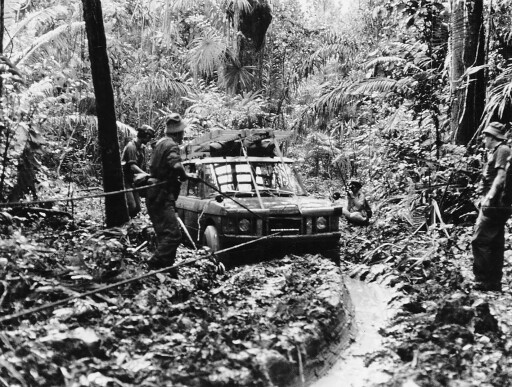 1979 & the ‘80s: Paris to Dakar, Anyone?
1979 & the ‘80s: Paris to Dakar, Anyone?
First car to win the Paris-Dakar? Not a pedigree rally weapon but a close-to-standard Range Rover Classic in 1979. The result proves no fluke, either: a V8 Rangie does it again in 1981, and Range Rovers remain the go-to choice for competitors throughout the ’80s – some 40 examples of Solihull’s finest enter the 1985 Paris-Dakar.
1980 & 2014: Battling across the Rocky Mountains
Keen to build brand awareness as it re-enters the North American market in the late ’80s, Land Rover packs its updated Range Rover off on an ambitious, entirely off-road epic from Wyoming to New Mexico, tip-toeing along the spine of the Rockies. Eight cars travel in convoy wearing the slogan ‘Tread Lightly!’ Well, with 2000-metre drops on some parts of the route, you would…
1981, ’82 & ’87: Yellow Fever
Jeeps are used for the inaugural Camel Trophy adventure/race in 1980, but the following year the organisers switch to Range Rovers for the event in Sumatra and never look back – they’re the expedition’s weapon of choice again in ’82 (in Papua New Guinea) and ’87 (in Madagascar). Amateur teams wade, float and rock-crawl to places never before seen by cars, doling out medical supplies and conducting geological surveys as they go.
Upping the competitive ante even further, the teams must battle subliminal nicotine cravings on a daily basis.
2010: The lost city, found!
In the camel and tyre tracks of Sirs Wilfred Thesiger and Ranulph Fiennes, both of whom crossed the Arabian Peninsula’s Empty Quarter, veteran journo Gavin Green searches for the lost city of Ubar (rediscovered by Fiennes in 1992) for a legendary story in UK’s CAR magazine. Fiennes got there by Land Rover Discovery, Green by Range Rover TDV8.
2018: Stairway to heaven
As publicity stunts go, this Range Rover Sport plug-in-hybrid promo is an epic. The 2.5-tonne Range Rover claws its way up the 999 steps of Heaven’s Gate, the mysterious rock arch at the summit of China’s Tianmen mountain, said to link the mortal world and the realm of the gods. It’s the first time a vehicle has attempted the 45-degree climb, over 1500 metres above sea level.
Good job Ho-Pin Tung remembers the handbrake at the top.


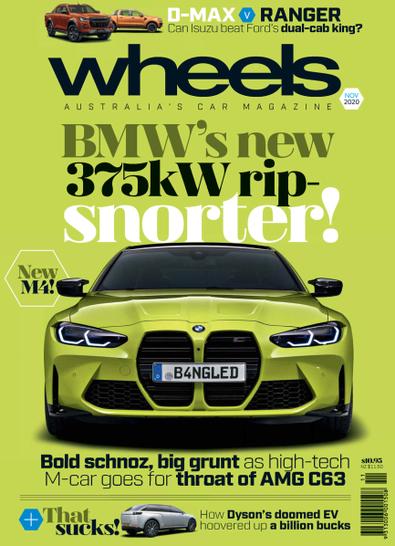

COMMENTS